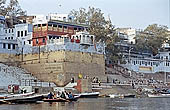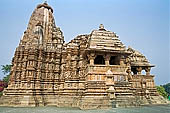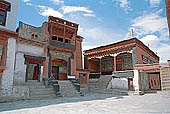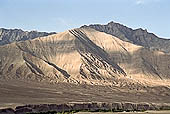Like many other westerner travellers I was alwys been attracted by ‘mysterious India’. Nowadays little remains of the exotic character that still lures the tourists of packed trips. More than mysterious, India is a very confusing and complex nation. Its religions, economy, history, society culture and above all its huge population present a kaleidoscopic array of diversity and complexity that can be quite hard to anyone who does not know this distant land.
But the attraction I always had for this country lay just in this diversity, expecially in its cultural distance that in our 'homologized' world of globalizations still survive although I fear not for long.
Travelling in India is not very appealing: the widespread poverty, the limited suitable accommodations, unreliable and uncomfortable transportation (riding an Indian train is an unforgettable adventure), polluted cities clogged with vehicles. But a journey though the cultures of India is an exciting and unforgettable trip. It presents a richness of diversity, unlike any other nation, with thousands of cultural variations established over millennia by the influences from outside on local religions and social systems.

|
Ghats of Varanasi
|
Spiritual India
Above all, from the religious point of view, India is the birthplace of Hinduism Buddhism and Jainism and home to Muslims, Sikhs, Zoroastrians, Christians and a number of smaller faiths.
Varanasi the City of Light (Uttar Pradesh) with its ghats against a backdrop of xvii and xix c. temples and palaces and the hundreds of pilgrims.
Dharamsala (Himachal Pradesh) home to His Holiness Dalay Lama and the exiled Tibetan government.
Sarnath (Uttar Pradesh) with its buddhist stupas
The Golden Temple of Amritsar (Punjab) with the central Hari Mandir, destination of thousands of Sik devotees.
The holy city of Puri (Orissa) birthplace of the Jagannath cult.
Temples of Khajuraho |

|
Temples, Monuments & Lost Cities
The ancient and noble culture of India is illustrated by a number of fascinating places and spectacular medieval art and architecture.
The Temples of Khajuraho (Madhya Pradesh): World Heritage monuments most famous for the erotic sculptures.
The deserted palaces of Orchha (Madhya Pradesh)
Bhubaneswar the temple city and the sun Temple of Konarak (Orissa)

|
Amritsar Golden Temple
|
Ladakh with its Gompas, ancient Buddhist monasteries perched on rocky crags of this trans-Himalayan region. Here prayer flags flutter against the blue sky, sending their silent prayers to the heavens.
Monasteries of Ladakh |

|
Natural India
Indian natural landscapes are tremendously diverse from the towering, snow-capped Himalayas in the north, to the table-flat plains of the Ganges Plain.
Panna National Park (Madhya Pradesh)
Ladakh the Little Tibet, stark world , a breathtakingly beautiful yet desolate lunar-like landscape of the trans-Himalayas
Manali & Kangra Valley (Himachal Pradesh) Travelling overland from Leh to Manali takes you from the vast, bleak tracts of the rust-colored high altitude trans-Himalayan desert of Ladakh to the dense green deodar forests and cultivated terraces of Himachal Pradesh.

|
Mountain landscape of Ladakh
|
India is a very rural country. Nearly 75% of its people live in rural areas, most often in villages where they engage in traditional types of farming.
Orissa the holy land of Hindus
Originally attracted by its celebrated temple architecture, Orissa surprisingly fascinated us with the beauty of its exuberant green countryside and the still largely rural character of the population of the many villages encountered during the trip, not mentioning the tribals, one of the major point to visit the country.
Orissa |

|
|
Related Pages
-
-
-
-
-
-
-
-
-
-
-
-
|
|



